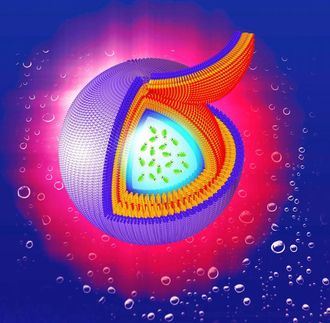Biophage announces capability of its PDS(R) Biosensor to detect toxic cyanobacteria in drinking water and in dietary supplements
PDS(R) Biosensor only known system that can detect the presence of cyanobacteria and identify their toxic effects on living cells
Biophage Pharma Inc. announced that its PDS(R) Biosensor can detect cyanobacteria (more commonly known as blue-green algae) as well as their toxins. Recent results of a collaborative project with USEPA, Office of Research and Development, indicate that the PDS(R) Biosensor can rapidly detect the presence of all the cyanobacterial toxins tested. These results also suggest that this Biosensor will be able to identify the presence of unknown toxins mainly because detection is based on the biological effects (killing of cells) of a toxin and not its identity.
Found worldwide in various aquatic environments (fresh, brackish and marine waters) as well as in water distribution systems, cyanobacteria are usually too small to be seen, but sometimes they multiply rapidly and form visible colonies (called blooms). Up to 50% of cyanobacterial blooms produce extremely toxic substances that are capable of causing serious illness or even death if consumed. Moreover, these toxins can accumulate in fish and shellfish, and indirectly affect other organisms through the food chain. Acute exposure to high-level concentrations of these toxins causes liver damage, while subchronic or chronic exposure may promote liver tumor formation. Blooms of cyanobacteria have recently become more prevalent worldwide, as a consequence of increasing nutrient levels such as nitrates and phosphates (from fertilizers and detergents) in lakes and rivers.
Despite a growing awareness of the major problems associated with the presence of cyanobacterial toxins, rapid and precise methodologies that can quantify toxin occurrence and/or its biological effects are still a major challenge. Methods presently in use rely exclusively on antibodies, HPLC or PCR. The general goal of our collaboration with USEPA is the development of a new generation of biosensors that can rapidly detect cyanobacteria and their toxins in order to provide real or near-real time measurements of water quality through fixed platforms (docks, piers, water plants), or floating arrays (buoys, cruise ships and ferries).
Most read news
Topics
Organizations
Other news from the department research and development
These products might interest you

Octet R2 / Octet R4 / Octet R8 by Sartorius
Full power on 2, 4 or 8 channels: Label-free and GxP-compliant analysis of molecular interactions
Innovative label-free real-time protein quantification, binding kinetics and rapid screenings

Octet RH16 and RH96 by Sartorius
Efficient protein analysis for process optimisation and manufacturing control in high-throughput
Label-free protein quantification and characterization of protein-protein interactions

Octet SF3 by Sartorius
Surface Plasmon Resonance (SPR) using Single Dynamic Injections for Kinetics and Affinities
Curvature is Key - Adding a ‘Third Dimension’ to the Binding Curve

Get the analytics and lab tech industry in your inbox
By submitting this form you agree that LUMITOS AG will send you the newsletter(s) selected above by email. Your data will not be passed on to third parties. Your data will be stored and processed in accordance with our data protection regulations. LUMITOS may contact you by email for the purpose of advertising or market and opinion surveys. You can revoke your consent at any time without giving reasons to LUMITOS AG, Ernst-Augustin-Str. 2, 12489 Berlin, Germany or by e-mail at revoke@lumitos.com with effect for the future. In addition, each email contains a link to unsubscribe from the corresponding newsletter.
More news from our other portals
See the theme worlds for related content
Topic world Antibodies
Antibodies are specialized molecules of our immune system that can specifically recognize and neutralize pathogens or foreign substances. Antibody research in biotech and pharma has recognized this natural defense potential and is working intensively to make it therapeutically useful. From monoclonal antibodies used against cancer or autoimmune diseases to antibody-drug conjugates that specifically transport drugs to disease cells - the possibilities are enormous

Topic world Antibodies
Antibodies are specialized molecules of our immune system that can specifically recognize and neutralize pathogens or foreign substances. Antibody research in biotech and pharma has recognized this natural defense potential and is working intensively to make it therapeutically useful. From monoclonal antibodies used against cancer or autoimmune diseases to antibody-drug conjugates that specifically transport drugs to disease cells - the possibilities are enormous






























































